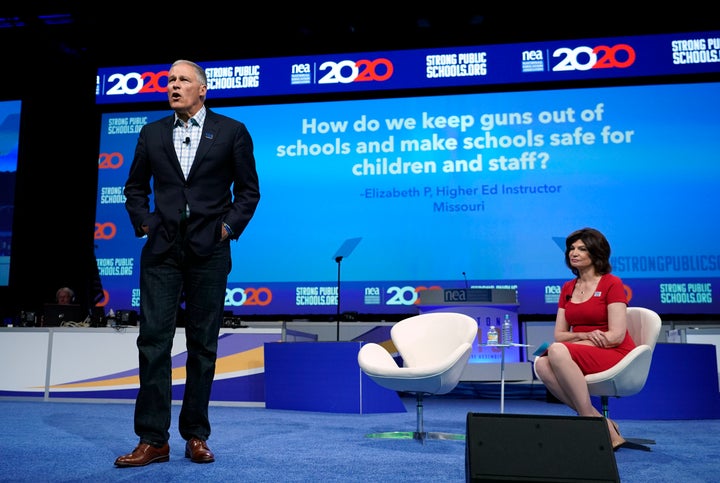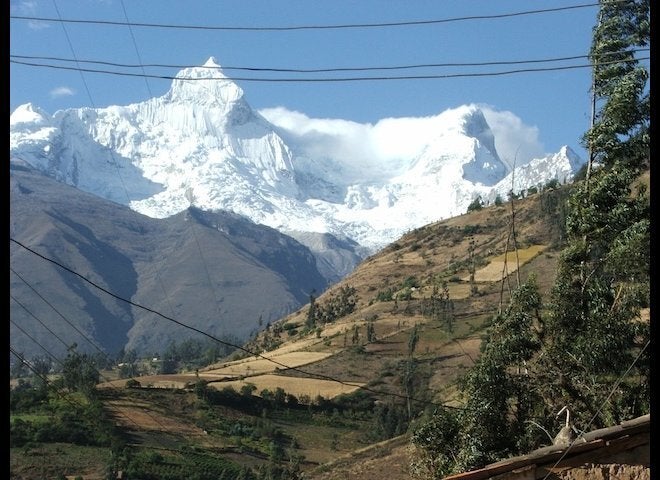Democratic presidential candidate Jay Inslee proposed banning the so-called “forever chemicals” contaminating millions of Americans’ drinking water as part of a sweeping environmental justice plan.
The Washington state governor vowed to enact regulations prohibiting the use of cancer-causing per- and polyfluoroalkyl substances, common ingredients in nonstick fabrics, food packaging and firefighting foam that now pollute the drinking water of an estimated 19 million Americans.
The 36-page memo, released Monday ahead of the next set of Democratic primary debates in Detroit, provides a detailed look at how an Inslee administration would implement his grand vision of pulling ecological systems back from the brink of collapse while restoring health in poor, predominantly minority communities that bear the brunt of the last century’s pollution.
The governor has already sketched out how he’d eliminate planet-heating emissions across major sectors over the next decade and challenged his competitors to oppose the Enbridge Line 5 proposal to build a new oil and gas pipeline under Michigan’s Straits of Mackinac.
The plan calls for reconstituting the Council on Environmental Quality, a sleepy White House department tasked with coordinating public health policy across federal agencies, as the Council on Environmental Justice. The new entity would ensure that people on the front lines have a role in informing federal policy and put justice and equity at the center of a national climate mobilization. It reiterates the Inslee campaign’s earlier proposals to direct the Department of Justice to aggressively investigate and prosecute corporate polluters.
Income and race are strong indicators of how much pollution exposure an average American can expect to face. Air in Black communities is, on average, 48% more polluted than in wealthier, white neighborhoods, an NAACP report found last year, and they are 75% more likely to live in neighborhoods abutting industrial sites. Black, Hispanic and poor students face the highest risk of inhaling toxic pollutants in crumbling schools across the country, a study published last year in the journal Environmental Research.
“I look at these two concepts as linked both in cause and solution,” Inslee told HuffPost by phone Sunday. “Its cause is pollution. Its solution is ending the dominance of fossil fuels.”
Inslee also proposes a new federal “Equity Impact Mapping” program to “track pollution hotspots, economic inequality and climate change impacts” and suggests implementing an “equity screen” to analyze how federal climate, energy and environmental funding is spent in marginalized communities.

Recalling to the climate equity law New York passed earlier this summer, Inslee’s plan pledges to spend $1.2 trillion ― a guaranteed 40% of the $3 trillion in federal spending the candidate outlined in his inaugural economic proposal ― to poor, pollution-ravaged communities. The proposal includes a provision to create a Universal Clean Energy Services Fund to offset working-class families’ monthly energy bills, which could increase in a rapid transition from fossil fuels.
“Anytime you can solve two problems instead of one, you’ve got to do it,” Inslee said. “It doesn’t mean this is going to solve racial disparity and income inequality, but we think these are good steps.”
Inslee remains at roughly 1% in aggregated polling of a crowded field of candidates. His bid to be the lone champion of addressing climate change, always a long-shot, now faces competition from billionaire climate activist Tom Steyer, who reportedly entered the race this month partly out of frustration that Inslee had yet to achieve a breakout moment.
At last month’s first round of televised primary debates, Inslee took heat for failing to seize the stage and to channel the sort of righteousness on the fast-worsening climate crisis that Sen. Kamala Harris (D-Calif.) did on racism.
Last week alone, Steyer and Sen. Kirsten Gillibrand (D-N.Y.) released their own climate proposals that, while far behind what Inslee put forward, earned praise from groups like 350.org, which said the plans respond “to our calls for climate leadership.”
But the Inslee campaign has nevertheless produced ann unrivaled inventory of detailed environmental proposals, setting what Rep. Alexandria Ocasio-Cortez (D-N.Y.) dubbed the “gold standard” for what a Green New Deal could ultimately look like.

